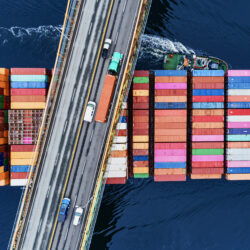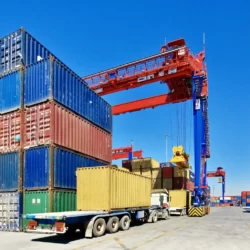Cargo owners want more control over transport

For supply chain resilience, you need more control over transport. An end-to-end transport management system (TMS) contributes to this, according to three TMS suppliers during Webinar Wednesday. Such a system starts with optimization of the transport network and ends with proper financial handling. Innovations such as chatbots and machine learning increase efficiency and reliability. “Even if you don’t run the daily transport operation yourself, a TMS offers several opportunities to increase your grip on transport.”
By Marcel te Lindert
Supply chain managers highly value visibility in logistics, but at the same time find that the effectiveness of their existing processes and systems leaves a lot to be desired. An end-to-end transport management system helps to increase visibility, but does much more than just that. “End-to-end transport management starts with designing an optimal transport network. What is my transport need? And where should I create hubs?” said Michael Böckle, Vice President Sales Strategy & Alliances at TMS vendor Alpega.
The next step is to procure transport and draw up transport contracts. Those contracts are the input for the tactical planning process, where routes, modes and frequencies are optimized. “Only then does the execution phase start, starting with planning transport orders. And sometimes that includes buying on the spot market,” stated Böckle, whose company runs a digital transport platform that gives cargo owners access to a network of 80,000 carriers. “That helps make the supply chain robust and resilient. Of course, the majority of orders are handled by the regular carriers, but around 10 to 15% go to the spot market.”
Harmonization and optimization
Implementing a standard TMS across the organization can already help reduce transport costs, Böckle claimed: “Simply because a standard TMS helps harmonize processes such as selecting the right carrier and checking invoices. Those who want to go a step further can increase productivity by optimizing. Think of consolidating transport flows, increasing vehicle load factors and automating processes.”
Agco, a manufacturer of agricultural machinery, was able to set itself apart during the pandemic with a particularly resilient supply chain. “Think about things like being able to draw up a contingency plan, for example by increasing diversity in transport modes and carriers. That helps to increase agility and flexibility in the event of disruptions. As a result, Agco was able to improve on-time deliveries by 25%, while simultaneously reducing transport costs.”
Instructions to the WMS
TMS vendor Caroz stressed the importance of in-depth integration with ERP and WMS systems, among other things. Integration is important not only to extract transport orders from the ERP system to the TMS, but also to send information back. “For example, our TMS is able to provide instructions to a warehouse management system. Which orders have been combined into one trip? And when should those orders be loaded?” said Maurits Jongens, Managing Director TMS at Caroz.
In addition, the TMS needs to be integrated with carriers’ systems to monitor orders. In fact, Caroz provides not only a TMS, but also a control tower including operators, analysts and tender specialists. “With this, we can offer cargo owners operational support. This is often a hybrid solution. Customers then use the TMS to plan and manage the outgoing goods flows themselves with their own planners, but use our control tower for their incoming goods flows.”
Self-billing
One TMS function that is gaining in importance is self-billing, according to Caroz: “For cargo owners, transport is often the biggest cost item. And almost always it is also the one they have least control over, simply because they do not have the capacity to check all invoices from carriers. Self-billing can be a godsend in that case,” said Jongens. He gave a customer example from Samsung Electronics. “They managed to improve load factor by 56% and grow shipment size by 40%, partly by consolidating orders. Efficiency increased by 59%, not only in the transport department but also in the finance department.”
Oracle argued that an end-to-end TMS offers more benefits than just cost reduction. “That is only one of the three benefits. We’ve seen a 4-8% reduction in transport spend after implementation of our TMS,” reported Rob Hazekamp, Director of Logistics Solutions at Oracle. “In addition, the service to customers improves because the TMS creates real-time visibility and increases the reliability of the transport operation. And what is increasingly important today is the ability to reduce the carbon footprint. Even if, as a company, you don’t run the day-to-day transport operation yourself, a TMS offers several opportunities to increase your grip on the transport operation.”
Faster innovation
According to Hazekamp, the fact that Oracle’s TMS runs in the cloud contributes to an agile, flexible and therefore resilient supply chain. “That requires an open and flexible system, which enables integrations to complementary solutions, such as marketplaces and visibility platforms. We can also, for example, deploy chatbots to handle queries about order status or apply machine learning to better predict arrival times. With a cloud solution, we can make these kinds of innovations available to our customers faster.”
These three software vendors plus Uber Freight will give a live demo of their solution at the IT Demo Day – TMS edition – at Schiphol Airport, the Netherlands, on the afternoon of Wednesday 17 April. More information about this event can be found here: SCM IT Demo Day – Transport Management Systems (TMS) – Supply Chain Movement.









